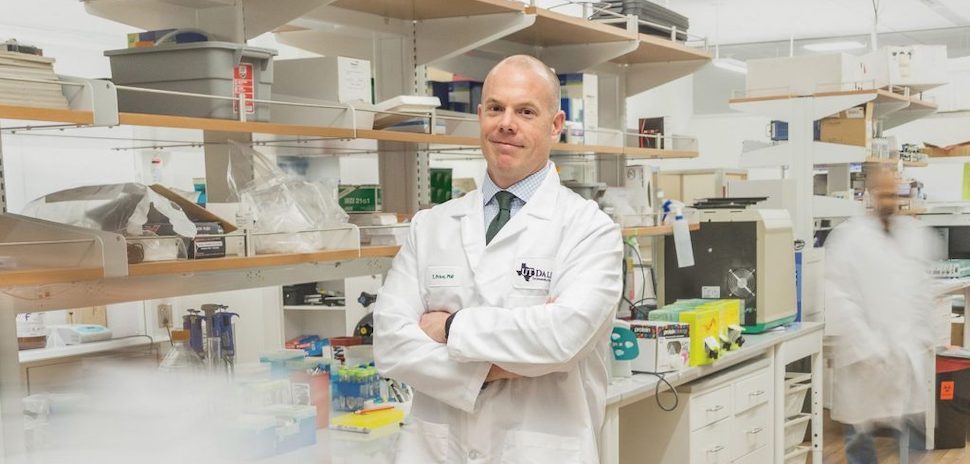Short-term exposure to a high-fat diet may be linked to pain sensation even without prior injury or a pre-existing condition such as obesity or diabetes, according to a new study from researchers at the University of Texas at Dallas.
Published in the journal Scientific Reports, the study compared the effects of eight weeks of different diets on two cohorts of mice. One group received normal food, while the other was fed a high-fat diet in a way that didn’t lead to the development of obesity or high blood sugar—both of which are conditions that can result in diabetic neuropathy and other types of pain, the university said.
Priming the mice to feel chronic pain
What the researchers discovered was that the high-fat diet induced hyperalgesic priming—a neurological change that represents the transition from acute to chronic pain—and allodynia, which is pain resulting from stimuli that do not normally provoke pain.
“This study indicates you don’t need obesity to trigger pain; you don’t need diabetes; you don’t need a pathology or injury at all,” Dr. Michael Burton, assistant professor of neuroscience in the School of Behavioral and Brain Sciences and corresponding author of the article, said in a statement. “Eating a high-fat diet for a short period of time is enough—a diet similar to what almost all of us in the U.S. eat at some point.”
Funding for the research was provided by the National Institute of Diabetes and Digestive and Kidney Diseases, the UT System STARS (Science and Technology Acquisition and Retention) program, the American Pain Society, and the Rita Allen Foundation.
UT Dallas said that the study also compared obese, diabetic mice with those that just experienced dietary changes.
“It became clear, surprisingly, that you don’t need an underlying pathology or obesity. You just needed the diet,” Burton said in the statement. “This is the first study to demonstrate the influential role of a short exposure to a high-fat diet to allodynia or chronic pain.”
Western diets are high in fat
Western diets are rich in fats—particularly in saturated fats, which have been shown to be responsible for an epidemic of obesity, diabetes, and associated conditions, UT Dallas said. People who eat high amounts of saturated fats like butter, cheese, and red meat have high amounts of free fatty acids circulating in their bloodstream that in turn induce systemic inflammation, according to the university.
Scientists have shown recently that high-fat diets also increase existing mechanical pain sensitivity in the absence of obesity, and that they can aggravate preexisting conditions or hinder recovery from injury, UT Dallas said. But no studies have clarified how high-fat diets alone can be a sensitizing factor in inducing pain from nonpainful stimuli, such as a light touch on the skin, Burton said in a statement.
“We’ve seen in the past that, in models of diabetes or obesity, only a subsection of the people or animals experience allodynia, and if they do, it varies across a spectrum, and it isn’t clear why,” Burton said. “We hypothesized that there had to be other precipitating factors.”
UT Dallas said that Burton and his team looked for saturated fatty acids in the blood of the mice fed the high-fat diet. They discovered that a type of fatty acid called palmitic acid—the most common saturated fatty acid in animals—binds to a particular receptor on nerve cells, in a process that leads to inflammation and mimics injury to the neurons.
Causing inflammation
“The metabolites from the diet are causing inflammation before we see pathology develop,” Burton said. “Diet itself caused markers of neuronal injury.
“Now that we see that it’s the sensory neurons that are affected, how is it happening? We discovered that if you take away the receptor that the palmitic acid binds to, you don’t see that sensitizing effect on those neurons. That suggests there’s a way to block it pharmacologically.”
Burton said the researchers’ next step will be to focus on the neurons themselves—how they are activated and how injuries to them be reversed.
Chronic pain is ‘fueling the opioid epidemic’
“The mechanism behind this transition is important because it is the presence of chronic pain—from whatever source—that is fueling the opioid epidemic,” Burton said in the statement. “If we figure out a way to prevent that transition from acute to chronic, it could do a lot of good.”
Burton said he hopes his research will encourage healthcare professionals to consider the role diet plays in influencing pain.
“The biggest reason we do research like this is because we want to understand our physiology completely,” he said. “Now, when a patient goes to a clinician, they treat a symptom, based off of an underlying disease or condition. Maybe we need to pay more attention to how the patient got there: Does the patient have diabetes-induced or obesity-induced inflammation; has a terrible diet sensitized them to pain more than they realized? That would be a paradigm shift.”
UT Dallas said the co-lead authors are Calvin D. Uong, a lab assistant in Burton’s Neuroimmunology and Behavior Lab, and Jessica A. Tierney, an MD/Ph.D student at the UT Medical Branch at Galveston. Cognition and neuroscience doctoral student and Eugene McDermott Graduate Fellow Melissa E. Lenert and Terry Scholar alumna Marisa Williams also contributed.
![]()
Get on the list.
Dallas Innovates, every day.
Sign up to keep your eye on what’s new and next in Dallas-Fort Worth, every day.


































































